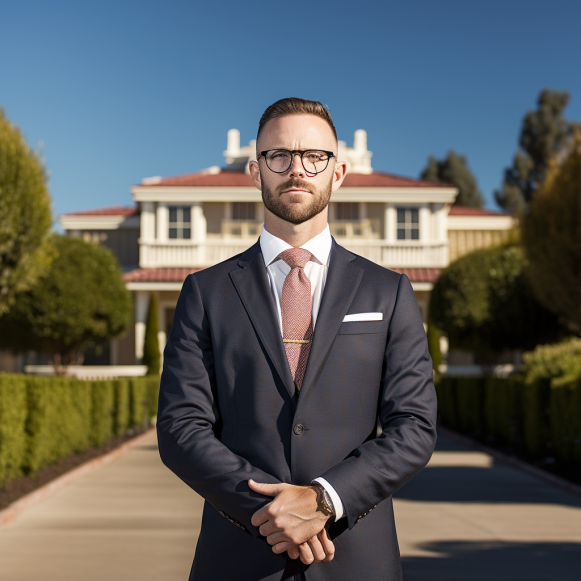A 35-year-old real estate investor who bought more than 200 properties using none of his own money shares 5 adjustments investors can make to keep thriving amid the highest mortgage rates in decades

- Sam Primm has used different types of loans to employ the BRRRR method, which requires tight margins.
- He says a few adjustments help keep an investor generating a positive cash flow, even when mortage rates are high.
- They include selecting the right mortgage type and tenant terms, and keeping up with rising market rental rates.
The 30-year fixed mortgage rate has reached 7.51%, a level not seen in over two decades, ushering in a new normal for homeowners.
If they purchased their current home at a lower price, the prospect of moving and forfeiting that is keeping them in place. This, in turn, is fueling an inventory shortage, which is frustrating homebuyers while keeping rates high.
There is never a perfect time to buy a house, according to Sam Primm, a 35-year-old real estate investor who has been actively buying since the age of 26.
He claims that even if interest rates fell below 3% again, housing demand and prices would rise. He noted that interest rates have returned to where they have been for the majority of the last 30 to 40 years.
Primm and his best friend Lucas Walls bought their first home more than nine years ago with the help of a private lender. They have since used a variety of borrowing strategies, ranging from private lenders to commercial and residential conventional mortgages. They used those loans in the BRRRR method, which stands for buy, rehab, rent, refinance, and repeat.
The process requires the investor to increase the value of the home by rehabbing it and then taking it to the bank to refinance it under a traditional mortgage. The tenant then pays the mortgage, leaving the investor with a cash-flowing asset that they did not pay for.
Primm goes above and beyond by using a private lender for the down payment. The conventional loan is then used to repay the original lender. Insider has confirmed that Primm and his partner Lucas own 198 units so far. Primm told Insider that they have since purchased additional property, bringing their total to well over 200. He co-founded Faster House, a real estate investment firm in St. Louis, Missouri, and Faster Freedom, a real estate investing community.
However, this method is not for the faint of heart. It necessitates knowing your numbers and operating on razor-thin margins because, especially when first starting out, you don’t have a cash cushion to fall back on.
Primm must constantly adjust his margins to remain cash flow positive as the housing market changes. He shared his top five tips for doing so in an interview with Insider.
His top five suggestions
Primm believes that you must accept lower profit margins. Previously, he advised investors to aim for a positive cash flow of $300 to $500 per month.
“You’re not going to be able to buy rental properties, especially with the method that I use, the BRRRR method, with none of your own money, and have $500 a month cash flow,” Primm told me. “That’s going to get tightened.”
A monthly cash flow of $100 to $200 could be the new normal. To compensate, investors must shift their mindset to a longer-term perspective. This implies a plan to hold the property until its appreciation provides a sufficient return.
Meanwhile, the rent should cover the property’s expenses, such as the mortgage, taxes, and insurance.
Demand market rent. Even the most experienced landlords can make this mistake, especially when dealing with long-term tenants. Rental rates have risen, but many property owners have failed to keep up, according to Primm.
“The majority of people just throw a number out there.” But do your homework and charge what the actual long-term market rent is,” Primm advised. “No one knows how much rental rates have risen. We made this mistake as someone who owns 285 rental properties where I believe you can rent for this, and we do some research and dig in, and we can get an additional $100 per month. And that’s quite a lot.”
Choose a longer-term mortgage. In general, the longer the term of a mortgage, the more interest you will pay. Shorter mortgages have lower interest rates but higher monthly payments. Extending your mortgage to lower your monthly payment could help you maintain a positive cash flow. You could pay more some months, which would be applied to the principal.
He also mentioned that if interest rates fall, you can refinance. However, you must consider how much this will save you in comparison to closing costs, which could range from 2% to 6% of your loan amount.
When looking for a mortgage, don’t dismiss small local banks. The rate may not be significantly different, but it may be as much as 1% lower. According to Primm, depending on a local bank’s risk tolerance, growth strategy, and the strength of its books, it can offer competitive rates.
Change your tenant base. If you’re still not meeting your expenses, a long-term tenant may not be the best option.
For a time, property owners and rental arbitrageurs turned to Airbnb short-term rentals to boost their returns. It was a popular strategy that went through a boom and bust cycle and is now less popular. Short-term rentals also require a lot of work and must be located in popular tourist areas, so it’s not a strategy for everyone, according to Primm.
The newly discovered sweet spot
He believes that midterm rentals are the new sweet spot. These are units that are rented for a period of 30 days to six months. He noted that while they are not as profitable as short terms, they are more profitable than a one-year lease.
If you own property that is not in a popular tourist area, this is an excellent option. These units are sought after by traveling nurses, corporate rentals, and insurance claim relocations. According to him, this means that these properties can be found anywhere from the suburbs to the cities. Assume you’re in the market for a new home. In that case, Primm says, locations near major hospitals are a great option because they can increase occupancy by catering to traveling nurses, a huge industry. However, if you already own a home, this could be an excellent option.
Primm, for example, told Insider that he rents out an apartment complex he owns in St. Louis, Missouri, for $1,000 per month. He noted that a few furnished units reserved for mid-terms rent for $2,250 per month, representing a 125% increase in cash flow. He added that they have a 90% occupancy rate.
“You can’t predict where a tornado is going to be,” Primm told reporters. “But if there’s enough people and there’s enough concentration, there’s going to be a fire, there’s going to be a tornado, there’s going to be something happening all the time.”






